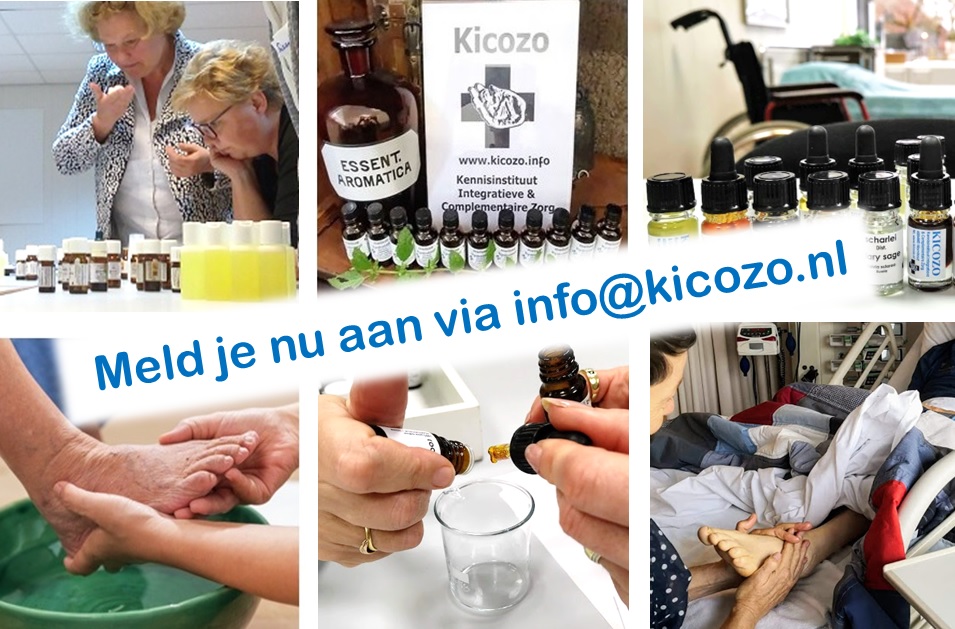
© Madeleine Kerkhof
Carbonated or CO2 baths are so called “stimulating” baths that mimic the effects of natural carbon dioxide springs. Well known are the warm springs in Nauheim and Oeynhausen in Germany.
In The Netherlands, home land of former nurse, now author and expert complementary therapies Madeleine Kerkhof, the benefits of carbonated baths were described in nurses handbooks in the 20st century (Stumpff, 1906; Melk 1941).
A carbonated bath is not only a relaxing bathing experience, but carbon dioxide also has important health benefits which is why it can be extremely helpful for a variety of symptoms and health issues.
In France and Germany in particular, carbonated baths are used in the treatment of polyneuropathy, poorly healing ulcers and Raynaud’s phenomenon, but also and especially in case of peripheral arterial disease (PAD) stage III and IV. In both countries, but also further afield, research has shown the effects on the vascular system, pain and wound care in particular.
Recently, a survey amongst Dutch recipients of the treatment, has shown excellent results in the treatment of peripheral neuropathy, spasms, circulation disorders of the periphery, skin and wound care [Kerkhof, 2023].
Studied actions of carbonated water baths
- Promoting local vasodilatation and microcirculation and subsequent tissue oxygenation [Mooventhan 2014, Xu 2017, Finžgar 2015, Watanabe 2006];
- Promoting wound healing [Finžgar 2017; Kerkhof 2023; Liang 2015];
- Promoting muscle recovery [Nonaka 2013, 2012];
- Attenuating muscular spasms [Kerkhof 2023];
- Alleviating neuropathic pains [Kerkhof, 2023].
Studied benefits of carbonated water baths
- Peripheral and polyneuropathy [Kerkhof 2023];
- Peripheral Arterial Disease [Zbroja 2021;
- Circulation issues of the skin [Kerkhof 2023; Ogoh 2018]
- Circulation issues of the muscles [Kerkhof 2023; Elimbam 2020];
- Raynaud’s phenomenon [Lange 2019; Schmidt 2005];
- Systemic sclerosis [Bogensperger 2019];
- Tired limbs, restless legs syndrome [Kerkhof 2023];
- Diabetic wounds [Kerkhof 2023; Finžgar 2021];
- (Chronic) and badly healing wounds [Kerkhof 2023; Brandi 2010].
Empirically the author has documented beneficial results in patients with arterial and venous circulation disorders, nightly leg cramps, restless legs syndrome, pains and cramps of muscles and joints, rheumatic disorders and tendon injuries, while a carbonated bath can also serve as preparative treatment for external (aroma) care of infections and inflammations in the urogenital area (in sitz baths) and of the skin.
A carbonated bath can be given in a dry environment (for which you need a special space and a CO2 tank), and in water. Carbonated water baths are more practical for use in many settings and at home.

Sensory experience and further benefits
In the carbonated water bath, fine carbon dioxide bubbles are formed, covering the immersed body part in the bath. This may be feet or hands, but also a larger area.
The bubbles create a (usually experienced as) pleasant sensation on the skin. In wound care we may see that the sensation is less pleasant in the first few baths, yet this usually improves after that. There are other considerations, for which the protocol needs to be observed carefully.
Another benefit of a carbonated bath is that it influences the thermoreceptors in the area [Mooventhan 2014]. The patient experiences the bath as warmer than the objectively measured temperature. This is especially favourable if the patient’s overall condition, or the condition of the skin, the circulatory system and the nervous system does not allow for warm(er) bathing temperatures. A carbonated bath promotes circulation in that part of the body that is in the water, while the water temperature can stay relatively low.
Two component
In health care spas, a tank is used to fill the bath with carbon dioxide. This is usually not available in other settings or at home. For these settings we use a two component alternative:
The carbon dioxide bath is formed by consecutively adding two separate components, sodium bicarbonate powder and aluminum sulphate in a large (!) grain. When in contact with each other, they react together to CO2. The large grain aluminum sulphate is necessary to allow for a bath duration for at least 5 minutes and up to 15 minutes.
Note: There is no risk of free heavy metal in the water. Citric acid is not suitable – it is an irritant.
Please see our video of the process here: https://www.youtube.com/watch?v=PfZA81QEjKw
Carbonated hand and footbaths
Carbonated foot and hand baths are amongst the most frequently applied carbonated water baths. They promote microcirculation and oxygenation of the bathed area and support the healing of the vessels, nerves and skin plus underlying tissues.
Another advantage of this intervention is that the footbaths in particular, but also the hand baths (in case of neuropathy of the hands) can be used everywhere, also by care recipients at home, if necessary with some help from an (informal) caregiver. Taking carbonated baths may therefore also promote self-reliance. The baths can be prepared easily, especially when aided by good instruction in the package.
Please find the pdf of the protocol on this page.
More reading:
- Complementary Nursing in End of Life Care. Integrative Care in Palliative Care.
Kerkhof, Kicozo 2015.
ISBN9789081767415. - Clinical Aromacare, Aromatherapy in Health Care & Practice.
Kerkhof, Kicozo 2023.
ISBN 9789081767484. - Poster by Madeleine Kerkhof on the results of her survey, presented at the 2nd World Congress Integrative Medicine & Health (September 2023).
Protocol Carbonated Foot & Hand baths:
References (extended):
Bogensperger S [2019] Vergleichende Therapieeffekte von einmaligem Warmwasser- und Kohlensäurehandbad auf die akrale Durchblutung bei systemischer Sklerose. Inauguraldissertation zur Erlangung des Grades eines Doktors der Medizin des Fachbereichs Medizin der Justus-Liebig-Universität Gießen
Brandi C, Grimaldi L, Nisi G, et al. The role of carbon dioxide therapy in the treatment of chronic wounds. In Vivo. 2010;24[2]:223-226.
Elimban V, Xu YJ, Bhullar SK, Dhalla NS. Temperature-dependent effects on CO2 water bath therapy induced changes in blood flow and vascularity in hind limb ischemia. Can J Physiol Pharmacol. 2020;98[4]:228-235. doi:10.1139/cjpp-2019-0537.
Finžgar M, Frangež HB, Cankar K, Frangež I. Transcutaneous application of the gaseous CO2 for improvement of the microvascular function in patients with diabetic foot ulcers. Microvasc Res. 2021;133:104100. doi:10.1016/j.mvr.2020.104100.
Finzgar M, Melik Z, Cankar K. Effect of transcutaneous application of gaseous carbon dioxide on cutaneous microcirculation. Clin Hemorheol Microcirc. 2015;60[4]:423-435. doi:10.3233/CH-141898.
Hartmann BR, Bassenge E, Hartmann M. Effects of serial percutaneous application of carbon dioxide in intermittent claudication: results of a controlled trial. Angiology. 1997;48[11]:957-963. doi:10.1177/000331979704801104.
Irie H, Tatsumi T, Takamiya M, et al. Carbon dioxide-rich water bathing enhances collateral blood flow in ischemic hindlimb via mobilization of endothelial progenitor cells and activation of NO-cGMP system. Circulation. 2005;111[12]:1523-1529. doi:10.1161/01.CIR.0000159329.40098.66.
Lange U, Bogensperger S, Tarner IH, Müller-Ladner U. The effects of a single carbon dioxide and hot water hand bath on acral perfusion in systemic sclerosis: A randomized, clinical study. J Scleroderma Relat Disord. 2019;4[2]:160-162. doi:10.1177/2397198318819919.
Liang J, Kang D, Wang Y, Yu Y, Fan J, Takashi E [2015] Carbonate Ion-Enriched Hot Spring Water Promotes Skin Wound Healing in Nude Rats. PLoS ONE 10[2]: e0117106. doi:10.1371/journal.pone.0117106.
Melk. H.A. Praktijk der Ziekenverpleging. Noorduijn, 1941. PPN 395319803.
Mooventhan A, Nivethitha L. Scientific evidence-based effects of hydrotherapy on various systems of the body. N Am J Med Sci. 2014;6[5]:199-209. doi:10.4103/1947-2714.132935.
Müller-Eschner, M.; Albrecht, K.; Tarner, IH.; et al.: Acute haemodynamic response to carbon dioxide hand immersion in patients with systemic sclerosis evaluated by Doppler ultrasonography. Clin Exp Rheumatol 2013; 31 [2Suppl. 76], S. 184–185.
Müller-Eschner, M.; Albrecht, K.; Saar, P.; Müller-Ladner, U.; Strunk, J.; Lange, U.: Therapieeffekt von Bastian [CO2] – Handbädern auf die akrale Durchblutung bei Patienten mit systemischer Sklerose. Physikalische Medizin in der Rheumatologie. Lange U. [Hrsg.], 2008; S. 151–154.
Nonaka K, Akiyama J, Tatsuta N, et al. Carbon Dioxide Water Bathing Enhances Myogenin but Not MyoD Protein Expression after Skeletal Muscle Injury. J Phys Ther Sci. 2013;25[6]:709-711. doi:10.1589/jpts.25.709.
Nonaka K, Akiyama J, Tatsuta N, et al. : Carbon dioxide-rich water bathing increases myonuclear number and muscle fiber size in regenerating skeletal muscles. J Phys Ther Sci, 2012, 24: 1295–1298.
Ogoh S, Washio T, Suzuki K, et al. Effect of leg immersion in mild warm carbonated water on skin and muscle blood flow. Physiol Rep. 2018;6[18]:e13859. doi:10.14814/phy2.13859.
Schmidt J, Monnet P, Normand B, Fabry R. Microcirculatory and clinical effects of serial percutaneous application of carbon dioxide in primary and secondary Raynaud’s phenomenon. Vasa. 2005;34[2]:93-100. doi:10.1024/0301-1526.34.2.93.
Sorg, Heiko & Limbourg, A. & Roushan, A.H. & Küther, G. & Braunschweig, D. & Gutenbrunner, Christoph & Vogt, Peter & Rennekampff, H.-O. [2012]. Improvement of wound healing by CO2-treatment-Organisation and management of the therapy. 23-28.
Stumpff J.E. Voorlezingen over Ziekenverpleging. De Erven f. Bohn, 1939 [1e druk 1906]. PPN 423817841.
Toriyama T, Kumada Y, Matsubara T, et al. Effect of artificial carbon dioxide foot bathing on critical limb ischemia [Fontaine IV] in peripheral arterial disease patients. Int Angiol. 2002;21[4]:367-373.
Watanabe S, Imanishi N, Ishizawa T, et al. : The effects of bathing with inorganic salts and carbon dioxide on body temperature, systemic circulation, and food ingestion and absorption. J Jpn Soc Balneol Climatol Phys Med, 2006, 69: 167–178.
Xu YJ, Elimban V, Dhalla NS. Carbon dioxide water-bath treatment augments peripheral blood flow through the development of angiogenesis. Can J Physiol Pharmacol. 2017;95[8]:938-944. doi:10.1139/cjpp-2017-0125.
Zbroja H, Kowalski M, Lubkowska A. The Effect of Dry Carbon Dioxide Bathing on Peripheral Blood Circulation Measured by Thermal Imaging among Patients with Risk Factors of PAD. Int J Environ Res Public Health. 2021;18[4]:1490. Published 2021 Feb 4. doi:10.3390/ijerph18041490.
Poster Carbonated Baths
Presented at the 2nd World Congress Integrative Medicine & Health (September 2023):


